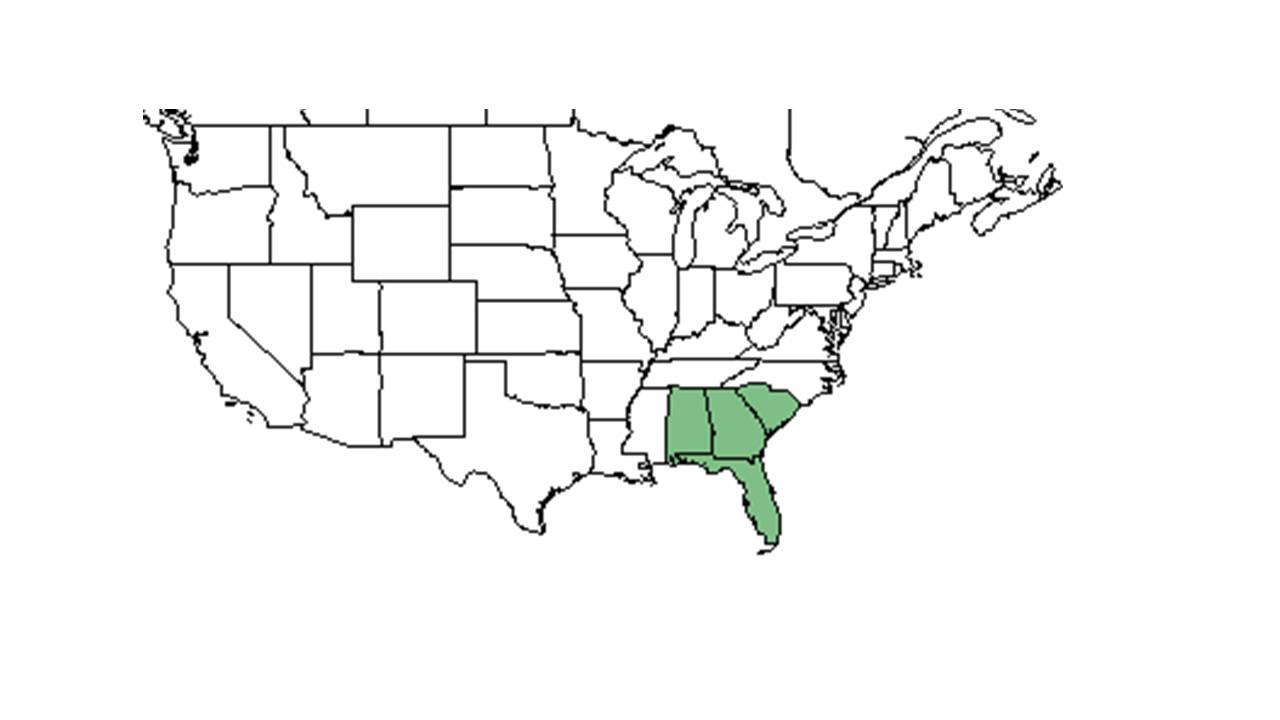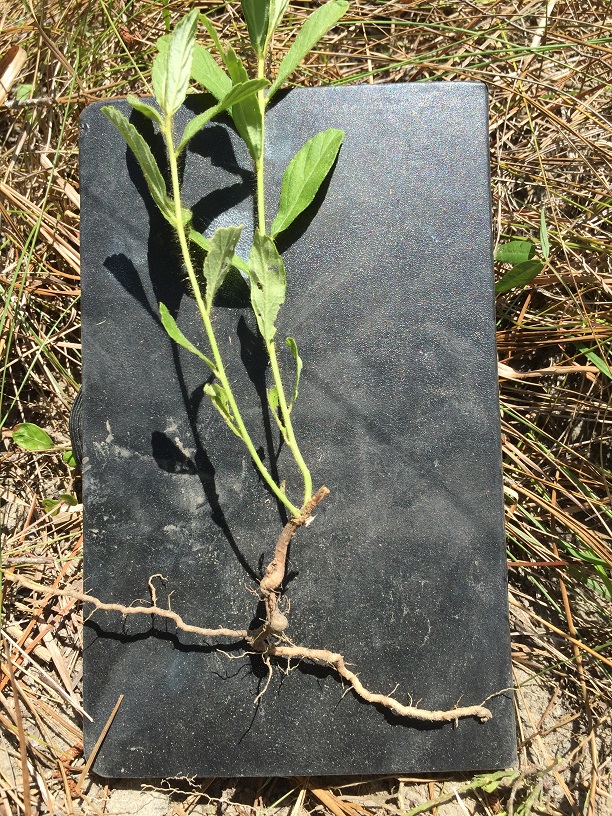Piriqueta cistoides
| Piriqueta cistoides | |
|---|---|

| |
| Photo taken by Michelle M. Smith | |
| Scientific classification | |
| Kingdom: | Plantae |
| Division: | Magnoliophyta - Flowering plants |
| Class: | Magnoliopsida – Dicotyledons |
| Order: | Violales |
| Family: | Passifloraceae |
| Genus: | Piriqueta |
| Species: | P. cistoides |
| Binomial name | |
| Piriqueta cistoides (L.) Griseb. | |

| |
| Natural range of Piriqueta cistoides from USDA NRCS Plants Database. | |
Common name: Pitted stripeseed
Contents
Taxonomic notes
Synonyms: none.[1]
Varieties: none.[1]
Description
"Perennial herb, 1.5-5 dm tall, forming colonies by root sprouts, stem pubescence densely stellate, admixed with long, spreading trichomes. Leaves alternate, oblong to lanceolate, 2.5-5 cm long, 0.5 -1.7 cm wide, finely stellate pubescent on both surfaces with long trichomes on the midrib below, obtuse, rarely acute, base rounded to attenuate, sessile or petioles to 2 mm long. Inflorescence a terminal bracteate raceme; pedicels equaling or shorter than the peduncles. Calyx 5 parted, 5-8 mm long; petals 5, brilliant orange-yellow, 1.5-2 cm long; stamens 5, shorter than the petals; pistil 3- parted, stigmas brush-like capsule 3-valved, 1-celled, globose, 5-7 mm long. Seeds tan or blackish gray, obovate, 1.8-2 mm long, ribbed, arillate."[2]
Distribution
P. cistoides was reported for Georgia, but the documentation is untraceable. A better confirmation is pending.[1]
Ecology
Habitat
Natural habitats include open upland pine woodland; well drained longleaf pineland; scattered on slopes and ridges in a longleaf pine forest; recently burned sandhill; and longleaf, wiregrass habitat.[3] It has also been documented to occur along powerline corridors. It has been observed to grow in drying loamy sand.[3] Associated species include longleaf pine and wiregrass.[3]
Phenology
P. cistoides has been observed to flower from April through September, with peak inflorescence in May.[3][4] Kevin Robertson has observed this species flower within three months of burning. KMR
Seed dispersal
This species is thought to be dispersed by ants and/or explosive dehiscence.[5]
Pollination and use by animals
Piriqueta cistoides has been observed at the Archbold Biological Station to host members of the Halictidae family such as Augochlorella aurata, Augochloropsis metallica, and Lasioglossum nymphalis.[6] Agraulis vanillae use P. cistoides. subsp. caroliniana as a host plant. Native bees feed from the flowers and ants feed off the elaiosome from the P. cistoides. subsp. caroliniana.[7]
Conservation, cultivation, and restoration
Cultural use
Photo Gallery
References and notes
- ↑ 1.0 1.1 1.2 Weakley, A.S. 2015. Flora of the southern and mid-atlantic states. Working Draft of 21 May 2015. University of North Carolina at Chapel Hill, Chapel Hill, North Carolina.
- ↑ Radford, Albert E., Harry E. Ahles, and C. Ritchie Bell. Manual of the Vascular Flora of the Carolinas. 1964, 1968. The University of North Carolina Press. 709. Print.
- ↑ 3.0 3.1 3.2 3.3 Florida State University Robert K. Godfrey Herbarium database. URL: http://herbarium.bio.fsu.edu. Last accessed: July 2015. Collectors: Loran C. Anderson, R. A. Norris, Kevin Oakes, Robert K. Godfrey, R. Komarek, Cecil R Slaughter. States and Counties: Florida: Duval, Gadsden, Leon, Wakulla. Georgia: Grady, Thomas. Compiled by Tall Timbers Research Station and Land Conservancy.
- ↑ Nelson, G. PanFlora: Plant data for the eastern United States with emphasis on the Southeastern Coastal Plains, Florida, and the Florida Panhandle. www.gilnelson.com/PanFlora/ Accessed: 19 MAY 2021
- ↑ Kirkman, L. Katherine. Unpublished database of seed dispersal mode of plants found in Coastal Plain longleaf pine-grasslands of the Jones Ecological Research Center, Georgia.
- ↑ Deyrup, M.A. and N.D. 2015. Database of observations of Hymenoptera visitations to flowers of plants on Archbold Biological Station, Florida, USA.
- ↑ Osorio R. 2008The Wildflower Garden Number 5 in the Series-Piriqueta cistoides. subsp. caroliniana Palmetto 25(1):8-9
